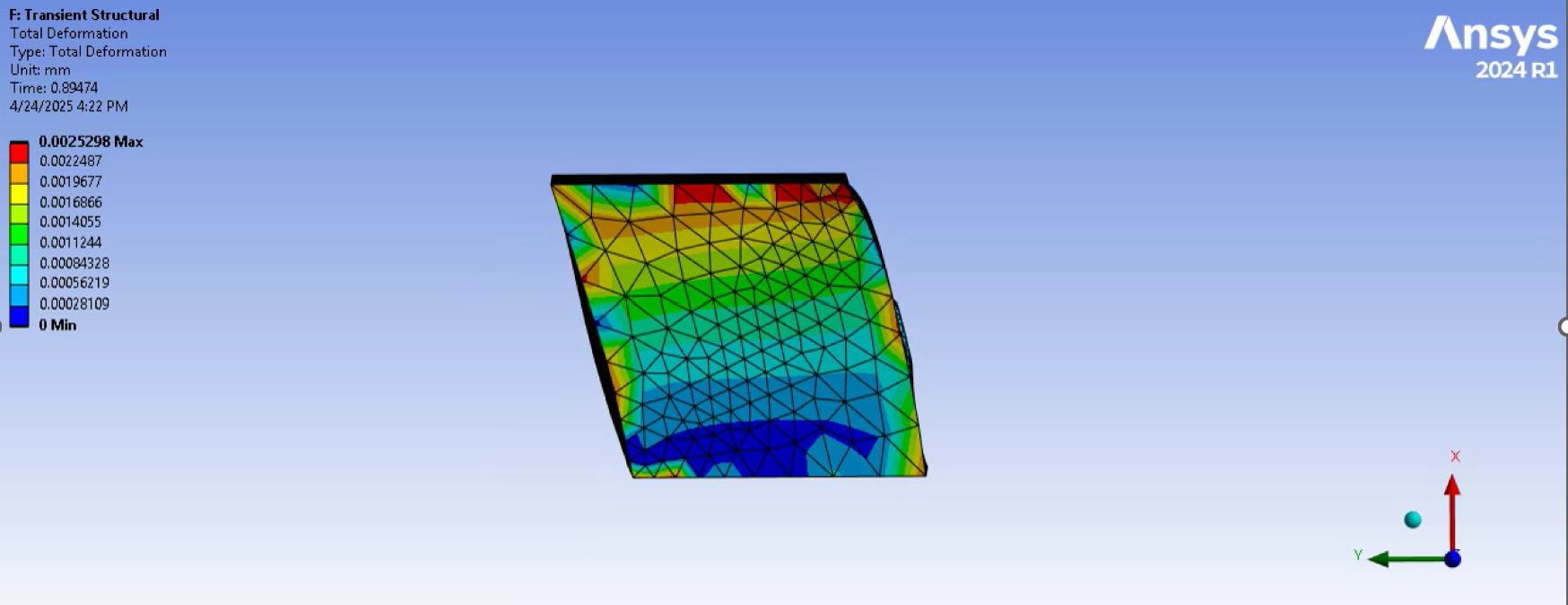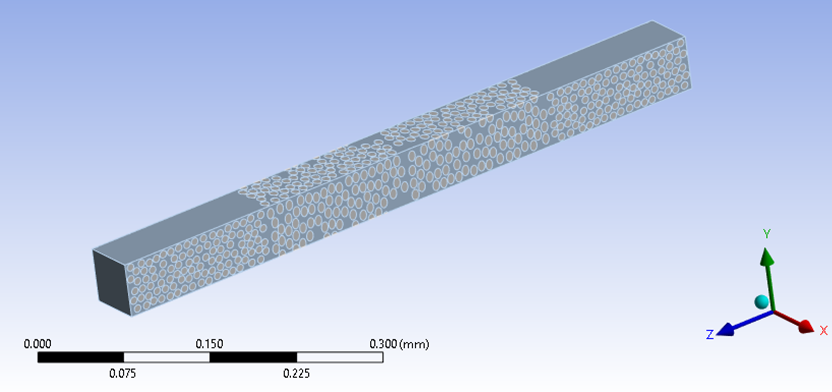-
-
April 28, 2025 at 9:09 pm
shahria
SubscriberHello,
I am trying to implement periodic boundary conditions using the CE command in my APDL script. My model involves non-linear materials, transient analysis and large deflection analysis. I have been able to run the model without any errors. However, I can see some unusual deformation in my model. It appears that the boundary conditions are not properly implemented and I receive the warning message in the picture. I tried different versions of the model with Nlgeom off and applied the same set of constraint equations without any issue. So, I wonder if there are any limitations to using constraint equations in large deformation analysis(Nlgeom on) in ANSYS APDL. I would appreciate any insights and suggestions on this matter.
Regards,
Shahriar.
-
April 29, 2025 at 2:35 pm
dlooman
Ansys EmployeeYou're right. Constraint equations don't update with changes in the position of the model (large deflection.) I don't see any workaround. Is the periodic condition translational or cylindrical (like on the low and high sides of a 45 degree sector of a cylinder)?
-
April 29, 2025 at 3:24 pm
shahria
SubscriberHello dlooman,
I appreciate the clarification. I am modeling rectangular 3D RVEs of composites consisting of 3 pairs of opposite faces, and my mesh is non-periodic. I was trying to apply periodic boundary conditions in my model so that all the opposite face pairs would have similar deformation(mirror image). There are some automated techniques to achieve that in LS-Dyna and Abaqus. But I couldn't find any in APDL. That's why I tried implementing the periodic boundary conditions from scratch with constraint equations. Please let me know if there are other approaches to implement periodic boundary conditions on RVEs in APDL rather than constraint equations.
Best regards,
Shahriar.
-
April 29, 2025 at 3:47 pm
dlooman
Ansys EmployeeI don't know of any. It sounds like you may not have matching meshes on the periodic faces. That's usually a requirement. Could you describe the deformation that requires large deflection? It can't be a large rigid body rotation of the model. That would definitely invalidate the periodic assumption.
-
April 29, 2025 at 4:20 pm
-
April 29, 2025 at 4:36 pm
dlooman
Ansys EmployeeThe displacements seem very small. Is the periodic condition between the right and left side of the model in the image? How much rotation would you estimate there is?
-
April 29, 2025 at 5:08 pm
shahria
SubscriberHello,
I have provided that figure to give an idea about the desired deformation and rigid body rotation. The periodic boundary condition is not applied here. My model reaches an average shear strain of 0.1, which corresponds to a maximum rotation of around 5 degrees. Is it large enough to invalidate the constraint equations?
-
April 30, 2025 at 1:50 pm
dlooman
Ansys EmployeeIt just occurred to me that you might be able to use generalized plane strain instead of coupling the two sides.
-
April 30, 2025 at 3:15 pm
-
- You must be logged in to reply to this topic.



-
3024
-
971
-
857
-
830
-
777

© 2025 Copyright ANSYS, Inc. All rights reserved.










